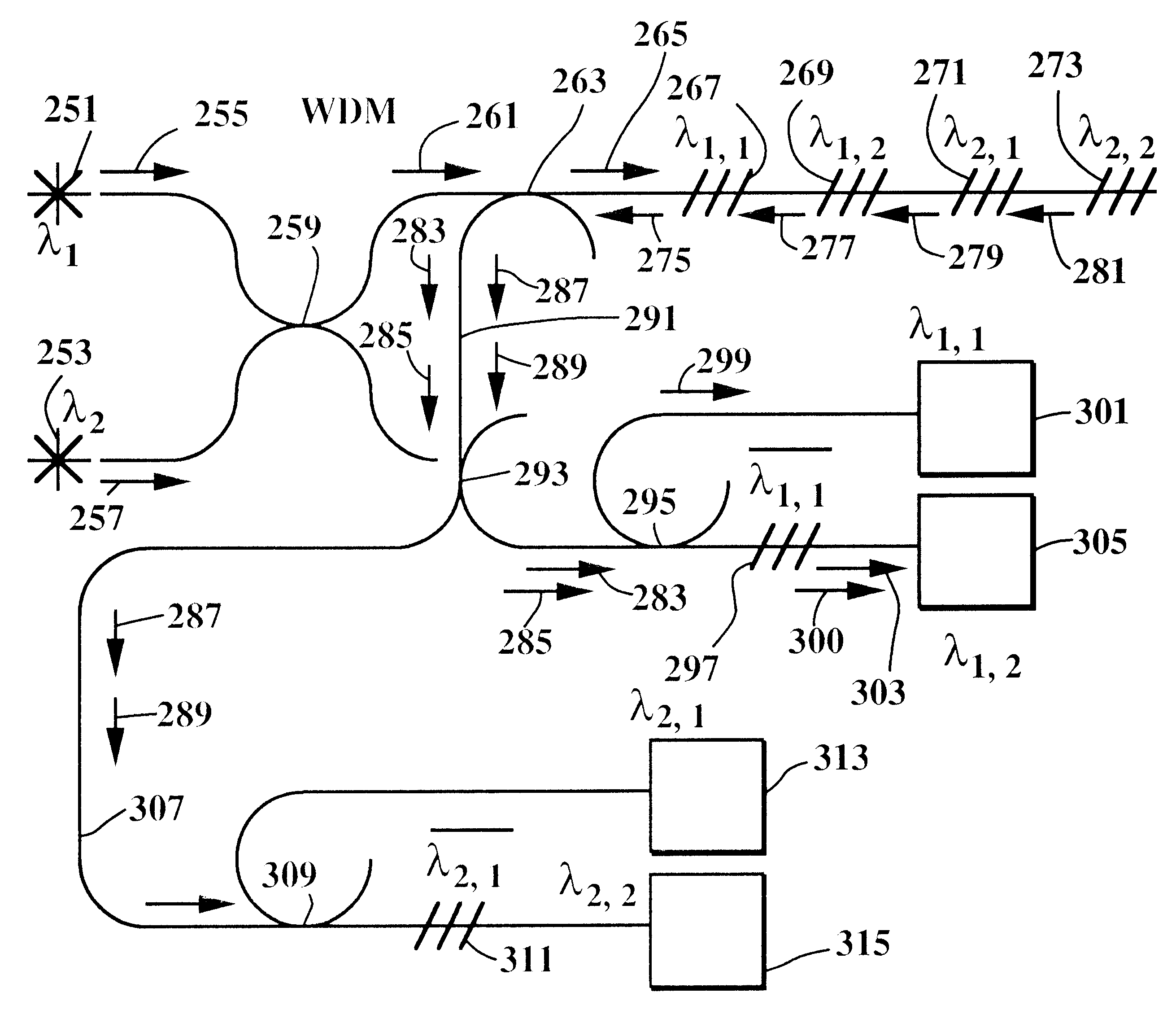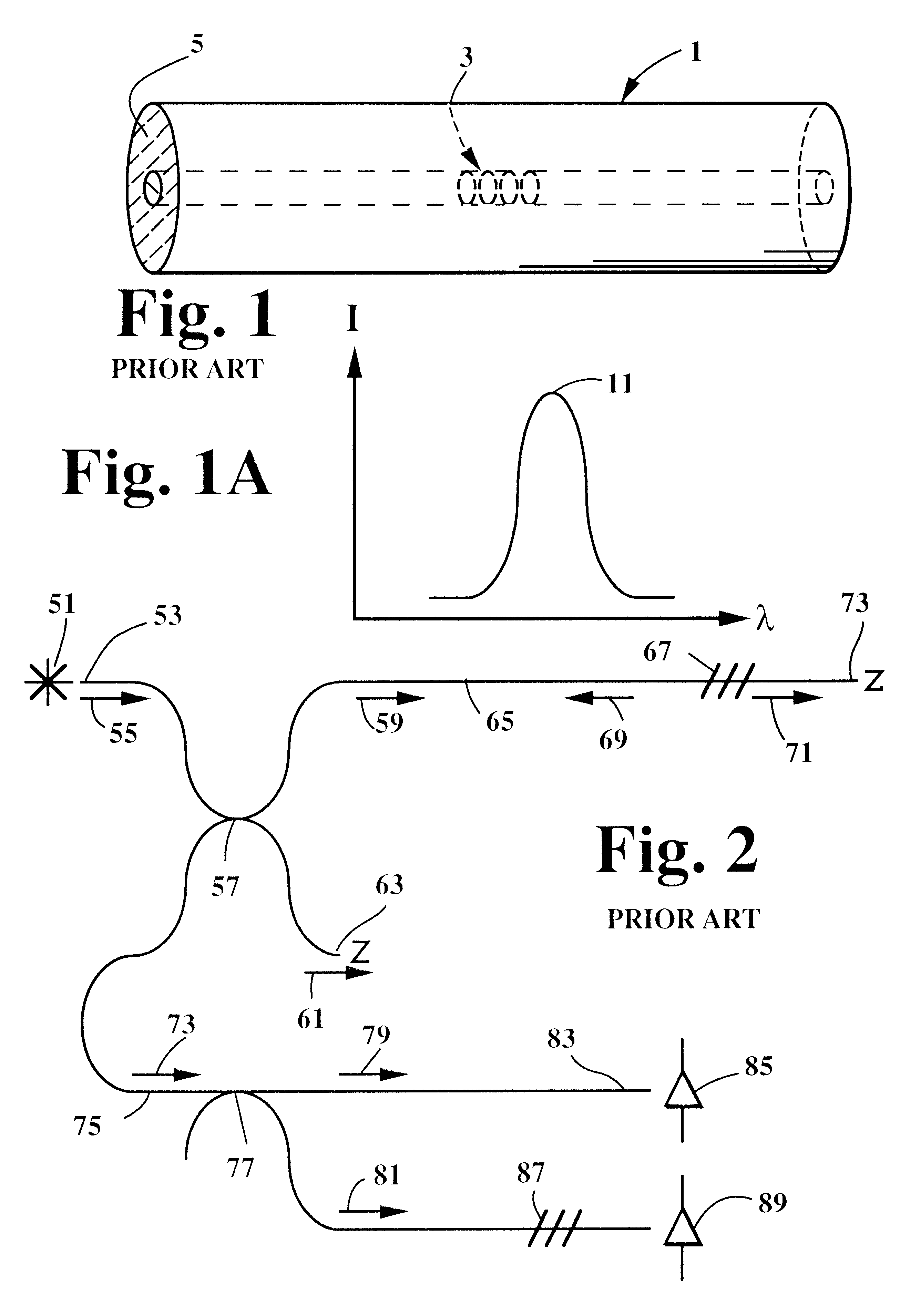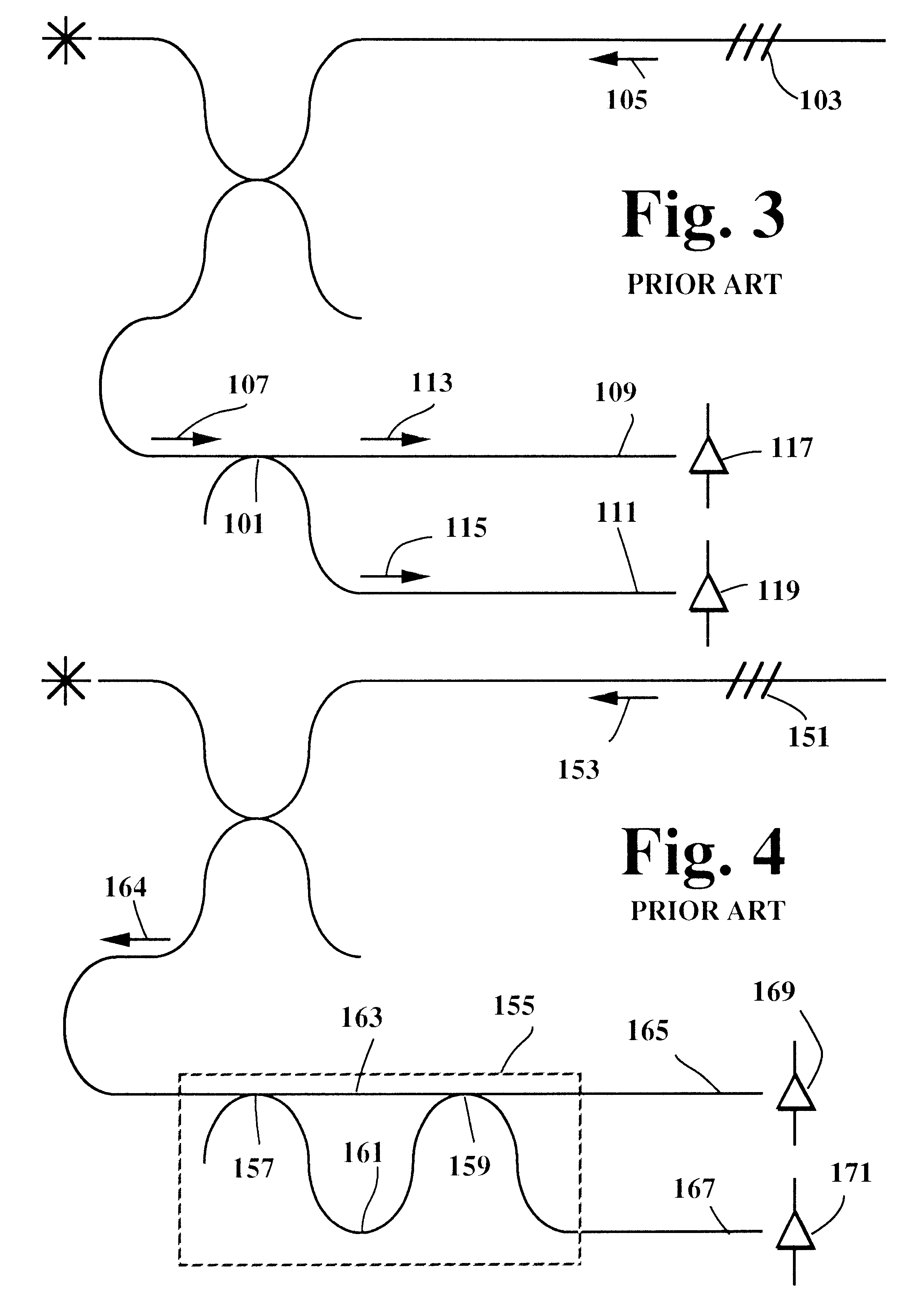High speed demodulation systems for fiber optic grating sensors
a technology of fiber optic grating and demodulation system, which is applied in the direction of optical radiation measurement, photometry using electric radiation detector, instruments, etc., can solve the problems of limited multiparameter distributed sensing, limited the utility of this approach, and the inability to achieve reasonable accuracy using conventional single mode fiber widely separated wavelengths, etc., to achieve high-speed multiparameter sensing and improve the accuracy and speed of measuremen
- Summary
- Abstract
- Description
- Claims
- Application Information
AI Technical Summary
Benefits of technology
Problems solved by technology
Method used
Image
Examples
Embodiment Construction
FIG. 1 shows a prior art fiber grating sensor based on writing a single grating onto optical fiber. The fiber grating sensor 1 consists of fiber grating 3 written onto a length of optical fiber 5. FIG. 1 a shows the spectral reflective output 11 from the sensor in FIG. 1.
FIG. 2 illustrates a prior art high speed fiber grating demodulation system based on using a ratiometric configuration with a fiber grating filter. The usage of a fiber grating to measure fiber grating sensor wavelength shifts if described by E. Udd and T. Clark in U.S. Pat. No. 5,380,995. In the case of the configuration of FIG. 2, light from a source 51 is coupled into a fiber end 53 and directed as light beam 55 to the central fiber beamsplitter 57. The light beam 55 is split into the light beams 59 and 61. The light beam 61 is directed toward the terminated end 63 which is designed to minimize back reflection and exits the system. The light beam 59 propagates down the fiber 65 and a portion of it 69 reflects off...
PUM
 Login to View More
Login to View More Abstract
Description
Claims
Application Information
 Login to View More
Login to View More - R&D
- Intellectual Property
- Life Sciences
- Materials
- Tech Scout
- Unparalleled Data Quality
- Higher Quality Content
- 60% Fewer Hallucinations
Browse by: Latest US Patents, China's latest patents, Technical Efficacy Thesaurus, Application Domain, Technology Topic, Popular Technical Reports.
© 2025 PatSnap. All rights reserved.Legal|Privacy policy|Modern Slavery Act Transparency Statement|Sitemap|About US| Contact US: help@patsnap.com



